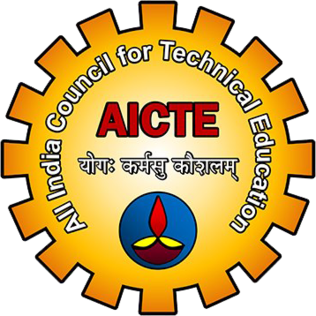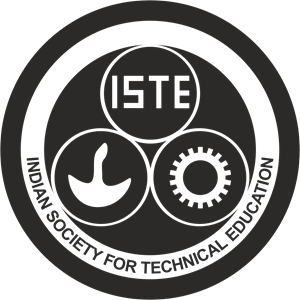RESEARCH FACILITIES
In order to provide the research facilities, our Department of Mechanical Engineering has developed different research-oriented laboratories. Student course and scholars can do research work in any one of the following laboratories as mentioned below:
Heating, ventilation, and air conditioning is the use of various technologies to control the temperature, humidity, and purity of the air in an enclosed space. Its aim is to provide thermal comfort and acceptable indoor air quality.
The primary purpose of the laboratory is to show students the experimental methods on thermal energies on various engines and demonstrate their operational procedures. This lab is to provide exhaustive knowledge on thermal engineering. The lab also contains a number of models of steam boilers, steam condensers, various boiler accessories and mountings.
Refrigeration is the process of moving heat from one space to another. It can take many different forms, the most common being Direct Expansion (DX) Cooling. Air-conditioning is that process used to create and maintain certain temperature, relative humidity and air purity conditions in indoor spaces. This process is typically applied to maintain a level of personal comfort.
List of Major Equipment’s available in Laboratory:
- Apparatus for Flash and Fire Point
- Guarded plate apparatus
- Lagged pipe apparatus
- Natural convection-vertical cylinder apparatus
- Forced convection inside tube apparatus
- Composite wall apparatus
- Thermal conductivity of insulating powder apparatus
- Pin-fin apparatus
- Stefan-Boltzmann apparatus
- Emissivity measurement apparatus
- Parallel / counter flow heat exchanger apparatus
- Single / two stage reciprocating air compressor
- Refrigeration test rig
- Air-conditioning test rig
In this laboratory the students learn the fundamentals of numerical control (NC) technology, programming of computer numerical control (CNC) machines in NC codes and APT language and with CAM systems. Students also gain experience in NC postprocessors and distributed numerical control, operation of CNC lathe and milling machines, and programming and machining complex engineering parts.
These computerized systems assist manufacturers in various operations such as planning, slotting, gear cutting, and turning. CAM helps manufacturers improve their time to market capabilities, and create precise dimensions. Provides a multipurpose and interdisciplinary environment for instructional, training, research and R&D-related machining and advanced manufacturing operations. This Manufacturing Technology Lab provides a unique environment to support manufacturing research.
List of Major Equipment’s available in Laboratory:
- Turret and Capstan lathes
- Horizontal milling machine
- Vertical milling machine
- Surface grinding machine
- Cylindrical grinding machine
- Radial drilling machines
- Lathe tool dynamometer
- Milling tool dynamometer
- Gear hobbing machine
- Tool makers microscope
- CNC lathe
- CNC vertical milling machine
- Tool and cutter grinder
- Turret and Capstan lathes
- Horizontal milling machine
This lab mainly used to study the mechanical properties of materials when subjected to different types of loading. Also used to Perform Tension, Torsion, Hardness, Compression, Deformation test on Solid materials. This lab helps to measure the properties of the materials such as impact strength, tensile strength, compressive strength, hardness, ductility etc.
List of Major Equipment’s available in Laboratory:
- Universal Testing Machine
- Impact Testing Machine
- Torsion Testing Machine
- Compression Testing Machine
- Rockwell Hardness Testing Machine
- Attrition Testing Machine
- Abrasion Testing Machine
- Direct Shear Testing Machine
3D printing allows for rapid prototyping and onsite manufacturing of products. Initially done with plastic, 3D printing now uses new techniques with new materials, such as aluminum, bronze, and glass. Biomaterials are also being incorporated, such as 3D printing ear cartilage and liver tissue. As the 3D printing industry grows, 3D printing will become a big part of many engineering fields.
3D Printing is one of the computer-aided manufacturing technologies much faster than all conventional manufacturing technologies. Many manufacturers use 3D printing or additive manufacturing technologies to produce parts like complicated aero spares, prosthetic limbs and robotics parts. One full-time certified instructor supported by a faculty expert help students to select and design their product model, slice it using appropriate software, select materials and colors for 3D printing. Students learn about object placement and orientation, 3D printing process parameters (temperature, speed, fill, rafts, etc.), rework, and post-processing, etc.
Currently, students use an inexpensive 3D printer based on fused deposition modelling (FDM) technology to print mostly with acrylonitrile butadiene styrene (ABS) or polylactic acid (PLA) 1.75 mm diameter filaments. These filaments are widely used in FDM 3D printers and can be obtained from many suppliers.
Students produced over two hundred objects ranging from simple teacups to sophisticated multi-part assemblies. One 3-D printer is provided to every 10-15 students. Also, every student is provided with powerful PCs and necessary modelling and slicing software facilities. The center is currently equipped with 3D printers and supporting hardware and software tools, with around 15 desktop computers.
The CAD/CAM Laboratory develops the skill and motivation of students, unifying them effectively to bring out innovation and creativity. The lab is equipped with AutoCAD, Solid works, and ANSYS software. The lab is acts as a central facility for concept design and product realization.
Objectives of CAD/CAM Laboratory:
- Universal Testing Machine
- Impact Testing Machine
- Torsion Testing Machine
- Compression Testing Machine
- Rockwell Hardness Testing Machine
- Attrition Testing Machine
- Abrasion Testing Machine
- Direct Shear Testing Machine






